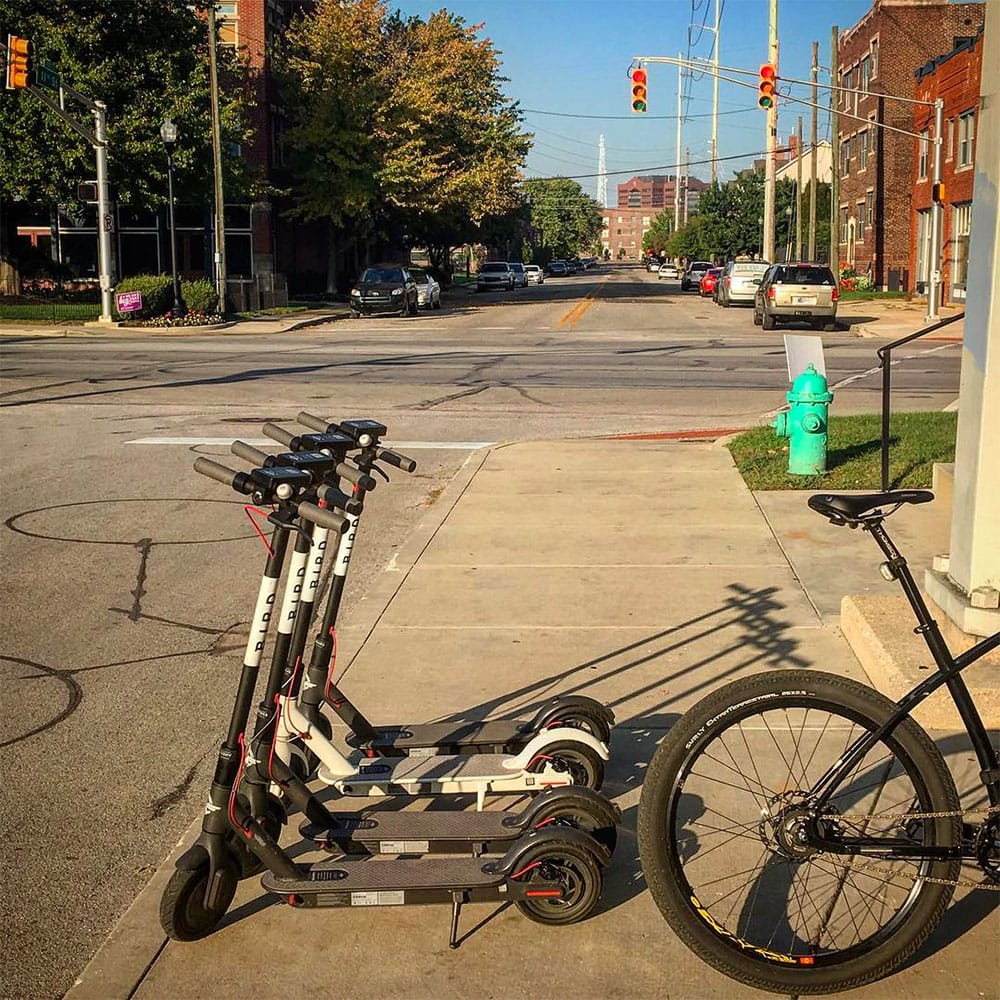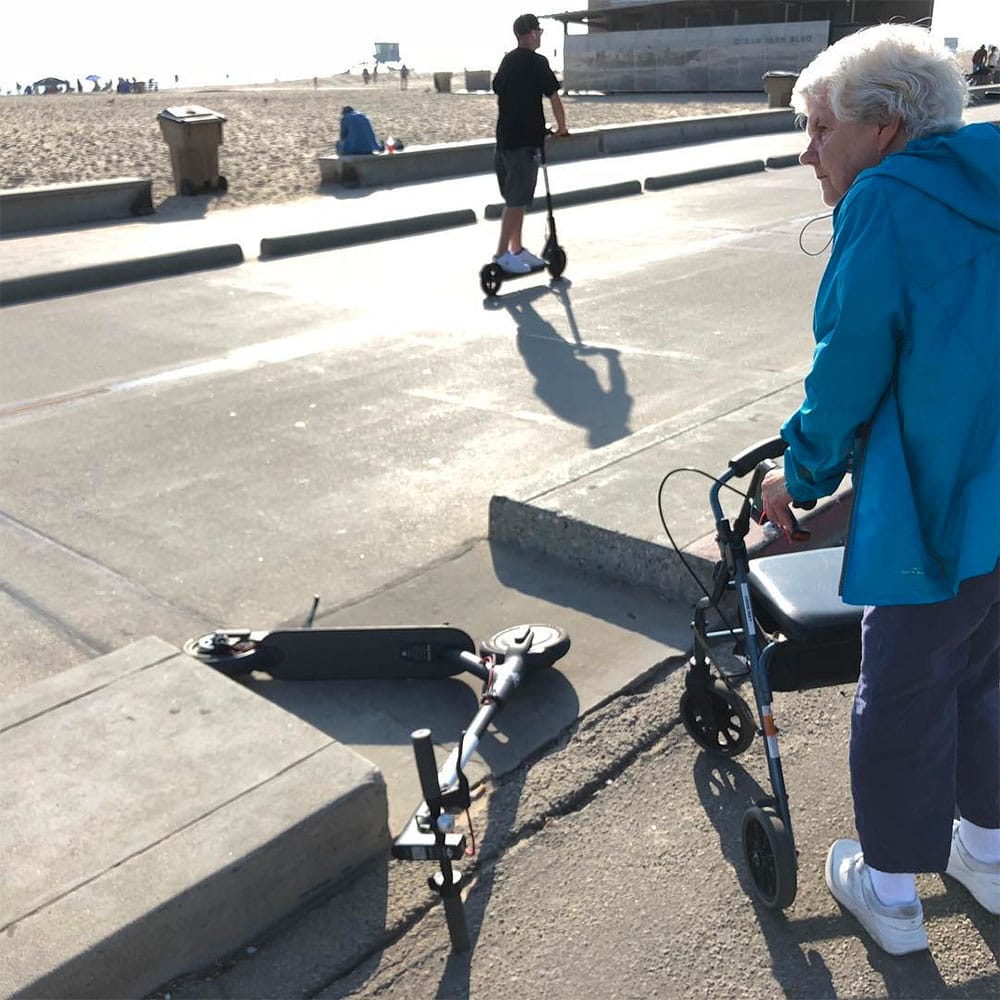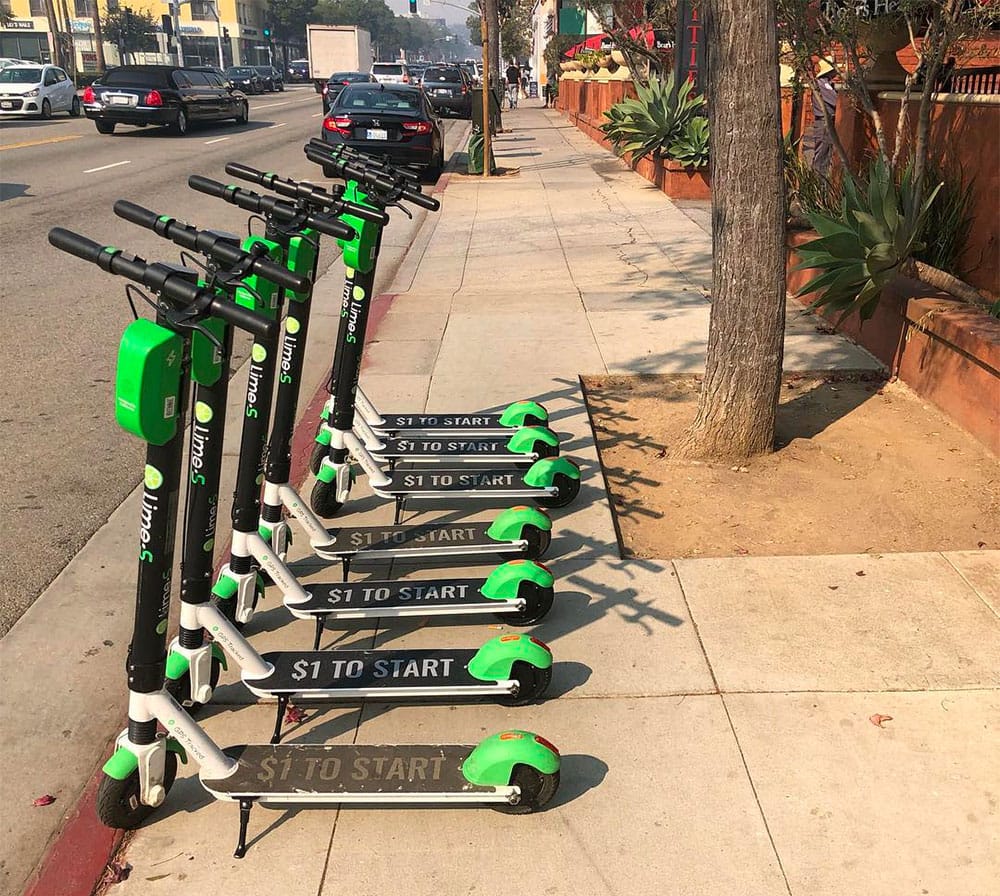Electric scooters are the latest trend in big cities.
Companies like Bird and Lime allow able-bodied people to unlock a set of wheels with their smartphones. In cities around the country, you’ll see millennials scooting through town at speeds of up to 15 mph on their scooter rental.
Riders pay $1 to start, then 15 cents per minute to ride—a small price to pay for convenient short-distance transportation. Because the scooters are dockless, riders abandon them as soon as they reach their destination. These next-gen “Bird droppings” litter America’s sidewalks and frequently block wheelchair users’ independence and freedom of movement.
Don’t believe me? There’s plenty of evidence on social media:



You get the point.
When parking hundreds (or thousands) of scooters on city sidewalks, some of them are bound to end up in places they don’t belong.
Earlier this year, Emily Shryock of Austin, Texas found several Bird scooters blocking the sidewalk. “As a wheelchair user, I don’t have the opportunity to just step off a curb or jump over or walk around an obstacle,” she told KXAN News.
When a complaint is made to the city regarding an improperly parked scooter, the operator must move it within 4 hours. Of course, a wheelchair user being forced to wait 4 hours for sidewalk access is unacceptable.
In a message to scooter riders, Emily said, “Please don’t leave them on ramps. Please don’t leave them in the middle of sidewalks. Because not everyone has the option to go around them.”
A recent survey conducted by Populus suggests that the scooters are here to stay.

With an overwhelming majority of respondents having a favorable opinion of the scooter rentals, their use is likely to increase in cities around the country.
Now is the time for local governments to regulate the conditions of their use and placement. Stiff penalties for blocking sidewalks should be instituted and riders prohibited from operating scooters on sidewalks. Safety is as much a concern as accessibility.
Have scooter rentals come to your city?
What should governments do to protect sidewalk accessibility?
Let me know in the comments below!















